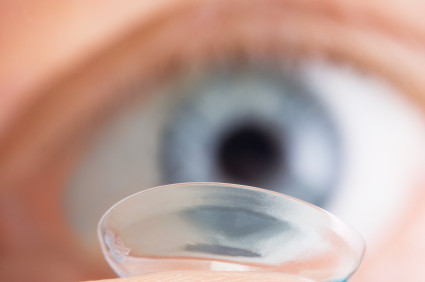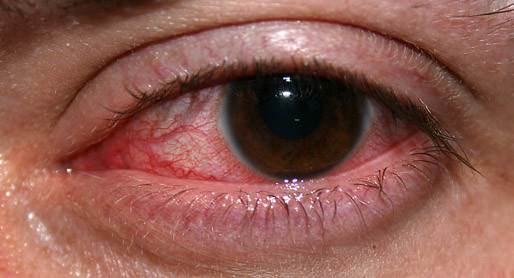Acanthamoeba Keratitis Causes, Treatment, Prevention
The eye is composed of delicate tissue with the front part exposed to the environment. It is prone to a host of diseases, especially infections from microbes in the environment. However, the eye has several mechanisms to prevent infections including tears to wash away microbes and protective layers that can minimize entry into the deeper eye tissue. These mechanisms can be disrupted when contact lenses are worn and lead to serious infections like Acanathamoeba keratitis.
What is Acanthamoeba keratitis?
Acanthamoeba keratitis is a an infection of the cornea (keratitis) caused by a species of single-celled parasites known as amoeba. It is mainly seen among contact lens wearers and is often associated with improper usage and storage of lenses. However, Acanthamoeba keratitis can affect even fastidious contact lens wearers as the microbe is widely prevalent in water sources. This includes regular tap water. Sometimes a co-infection with bacteria can occur which may further complicate the treatment and management of the condition.
Overall Acanthamoeba keratitis is not very common in the general population, affecting only about 1 in 250,000 Americans. However, the incidence is much higher among contact lens wearers where it may affect as many as 1 in 10,000 people. The eye infection can be difficult to treat but does not lead to infection throughout the body (systemic infection) or result in life-threatening complications. Nevertheless severe infections that are left untreated can cause extensive damage to the eye.
Causes of Acanthamoeba Keratitis
The cornea is the outer clear part of the eyeball which allows light to enter the inner part of the eye. Keratitis is the medical term for inflammation of the cornea. It can occur for a number of different reasons but most often it is due to an infection. Normally there are protective mechanisms to prevent an eye infection from occurring. However, when there is trauma to the eye then a number of microbes can cause an infection of the cornea.
Injury to the eye can occur through a number of different ways. Contact lenses causes minor trauma to the eye over a prolonged period of time. It is usually minimal in a person who is careful about the usage of their lenses. Storage is equally important. Commercial contact lens solutions are sterile and prevent microbes from causing infections. However, water from natural sources (rivers, lakes) and even tap water are not 100% sterile. It is from here that tiny parasites known as amoeba can reach the eye.
There are many different species of amoeba. Acanthamoeba are widely distributed in our environment across the world. It is mainly found in water (natural and treated) but can also be found in soil, dust and the air. There is no avoiding contact with it and most humans have antibodies against these microbes. People who wear non-disposable contact lenses, make their own homemade solutions to clean the lenses and wear lenses while swimming are at a greater risk of developing Acanthamoeba keratitis.
Signs and Symptoms
The signs and symptoms of Acanthamoeba keratitis is not significantly different from similar superficial eye infections like conjunctivitis. It is therefore important that contact lens wearers in particular be aware of the symptoms and seek medical attention immediately. Viral conjunctivitis (pink eye) is not a serious infection and spontaneously resolves after a few days. Acanthamoeba keratitis on the other hand need to be properly treated before it complicates.
The symptoms include:
- Gritty sensation in the eye like these is a foreign body (such as sand or an eyelash) on the eye surface.
- Redness of the eye (bloodshot eyes) that persist for days even after removing the contact lens.
- Pain is usually present but may not always be prominent in the early stages.
- Excessive tearing.
- Light sensitivity.
- Blurring of vision.
- Corneal ulceration (ring-shaped)
Severe Acanthamoeba keratitis that is left untreated can lead to blindness.
Treatment of Acanthamoeba Keratitis
The treatment can vary depending on the severity of the keratitis. Early diagnosis is important for successful medical treatment and to prevent complications. When severe complications like corneal ulceration arises and there is subsequent loss of vision, then surgery is necessary to replace the cornea (corneal transplant).
Medical treatment involves the use of topical antimicrobials that are applied to the eye. Amoeba in the cyst form are highly resistant to antimicrobial agents and a combination of agents are therefore required. Acanthamoeba keratitis should always be treated by a medical professional. The use of over-the-counter eye drops will not suffice. In severe cases the corneal tissue may be extensively damaged and has to be removed (debridement) to expedite healing.
How to prevent Acanthamoeba keratitis?
Acanthamoeba keratitis can be very easily prevented. All contact lens wearers should be made aware of the risk, particularly if they are using non-disposable lenses. A few simple measures on a daily basis is all that is needed to prevent it and these measures are part of good contact lens care and usage.
- Use a commercially-available good quality contact lens solution to store the lenses and rinse it before use. Homemade solutions using water and table salt are not suitable.
- Always wash your hands thoroughly before inserting or removing contact lenses from your eye. Ideally the hands should be washed with an antiseptic soap. A hand sanitizer can also be used if running water and soap is not available.
- Discard disposable contact lenses according to packaging instructions and your practitioner’s prescription. Torn lenses or lenses that suddenly feel uncomfortable should not be used.
- Visit your eye care practitioner regularly. Apart from ensuring that your lens prescription is correct for your current vision impairment, a practitioner can also identify eye conditions in the early stages,
- NEVER suck a contact lens. As a contact lens wearer you should always carry a contact lens storage case with a small volume of suitable solution should your lens fall out and need to be reinserted.
- NEVER share contact lenses with any other person. This applies to both prescription lenses and over-the-counter cosmetic color lenses that are often used to change eye color.
- NEVER wear contact lenses while swimming in a pool even if the water is chlorinated. The amoeba cysts are not as easily destroyed with water treatment methods.
References:
www.cdc.gov/parasites/acanthamoeba/gen_info/acanthamoeba_keratitis.html







